When it comes to warming up or recovering from a workout, one of the most crucial things to incorporate is a mobility flow. Mobility exercises help increase range of motion, enhance circulation, prevent injuries, and improve flexibility. This quick mobility flow is designed to help prepare your body for movement or assist in recovery after intense activity. Whether you’re preparing for a run, lifting session, or any physical activity, or if you’re in need of a post-workout recovery, this mobility flow will leave you feeling energized, flexible, and ready for your next move.
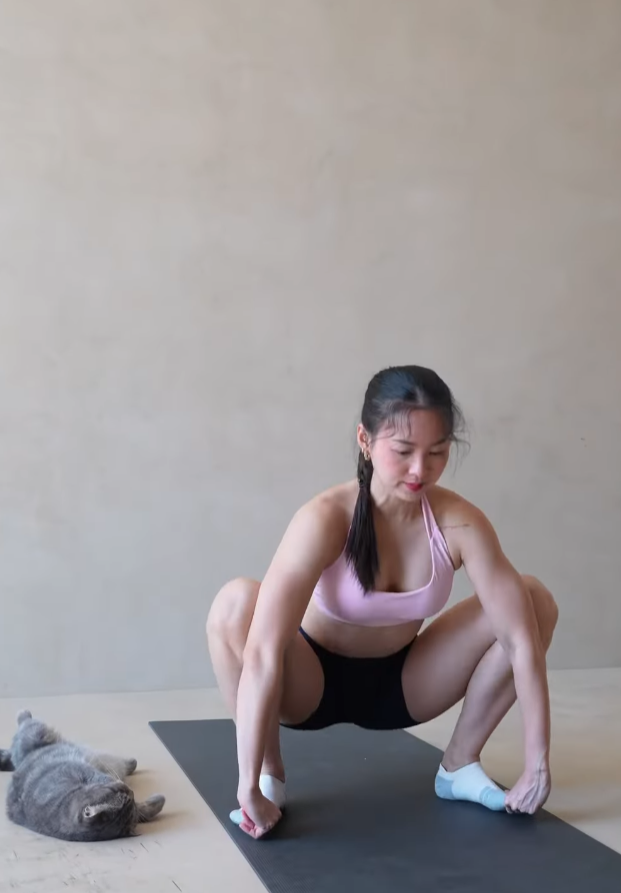
Why Mobility is Important
Mobility is the ability of your joints and muscles to move freely through their full range of motion. Unlike flexibility, which focuses on the muscles, mobility involves both muscles and joints. Having good mobility means that you are able to move comfortably without restriction or pain, which is vital for athletic performance and daily activities.
Incorporating a mobility flow into your routine can offer a wide variety of benefits. Here are a few key reasons why mobility should be part of your warm-up or recovery regimen:
- Injury Prevention: Dynamic mobility exercises help prepare your muscles and joints for the movements they’ll be performing during exercise. This reduces the risk of strains or sprains.
- Improved Performance: A good mobility flow helps enhance your flexibility, strength, and balance, which can improve performance in any physical activity.
- Increased Blood Flow: Mobility exercises increase blood flow to the muscles, which promotes faster recovery and reduces muscle soreness.
- Enhanced Posture: Mobility exercises can improve your posture by promoting better alignment and reducing stiffness.
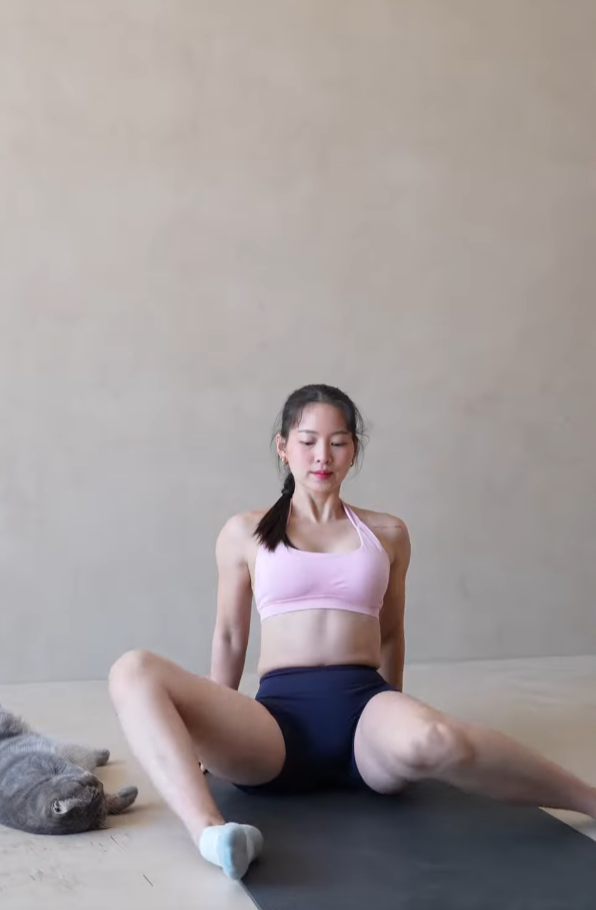
Now that we understand the importance of mobility, let’s dive into a flow that targets the most common areas in need of mobility: the hips, spine, shoulders, and ankles. This quick flow should take no more than 10-15 minutes to complete, making it the perfect pre-workout warm-up or post-workout recovery routine.
The Quick Mobility Flow
This mobility flow consists of six simple exercises that focus on improving range of motion, flexibility, and muscle activation. Each exercise should be performed for 30 seconds to 1 minute on each side or for 8-12 reps, depending on your personal needs.

1. Cat-Cow Stretch (Spine Mobility)
The Cat-Cow stretch is a great exercise to mobilize the spine and activate the muscles along your back. It improves flexibility in the spine and helps relieve tension in your lower back, neck, and shoulders.
How to Perform:
- Start on all fours with your wrists directly beneath your shoulders and your knees beneath your hips.
- Inhale as you arch your back, letting your belly drop towards the floor, and lift your head and tailbone toward the ceiling (Cow pose).
- Exhale as you round your back, tucking your chin towards your chest and bringing your tailbone towards your knees (Cat pose).
- Continue to flow between these two movements for 30 seconds to 1 minute.
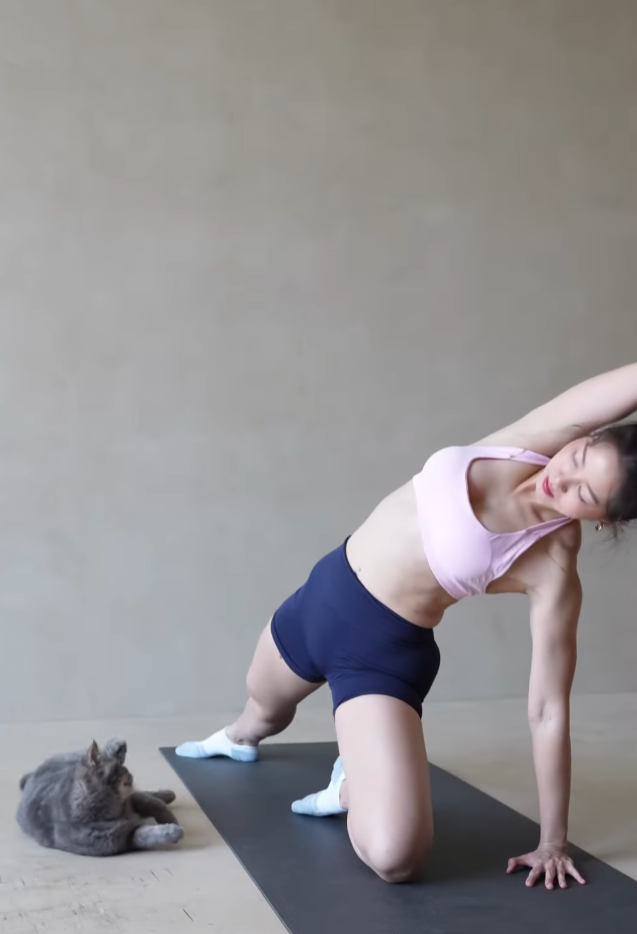
2. Hip Circles (Hip Mobility)
Hip circles are an excellent way to increase flexibility and mobility in the hips. This movement improves the range of motion in your hip joints, which is essential for both lower body exercises and day-to-day movement.
How to Perform:
- Stand with your feet shoulder-width apart and place your hands on your hips.
- Begin by gently rotating your hips in a circular motion, making large circles in one direction.
- Perform 8-10 circles in one direction, then reverse the motion and perform 8-10 circles in the opposite direction.
- Repeat this movement for 30 seconds to 1 minute.
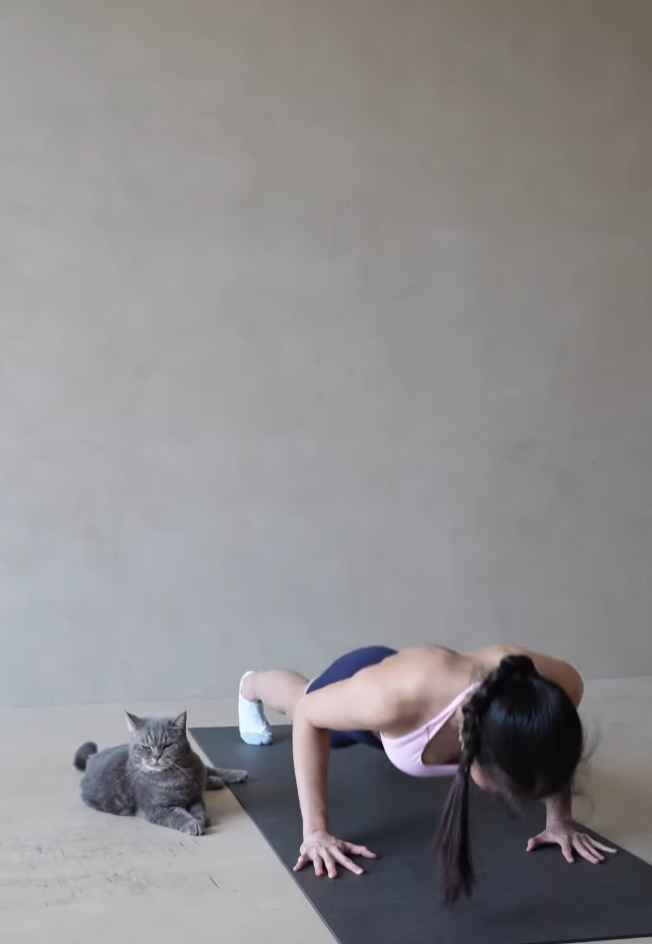
3. Lunge with Thoracic Rotation (Hip and Spine Mobility)
This exercise is a great combination of hip and spine mobility. The lunge position opens up the hips, while the thoracic rotation targets the upper back and spine, promoting better mobility in both areas.
How to Perform:
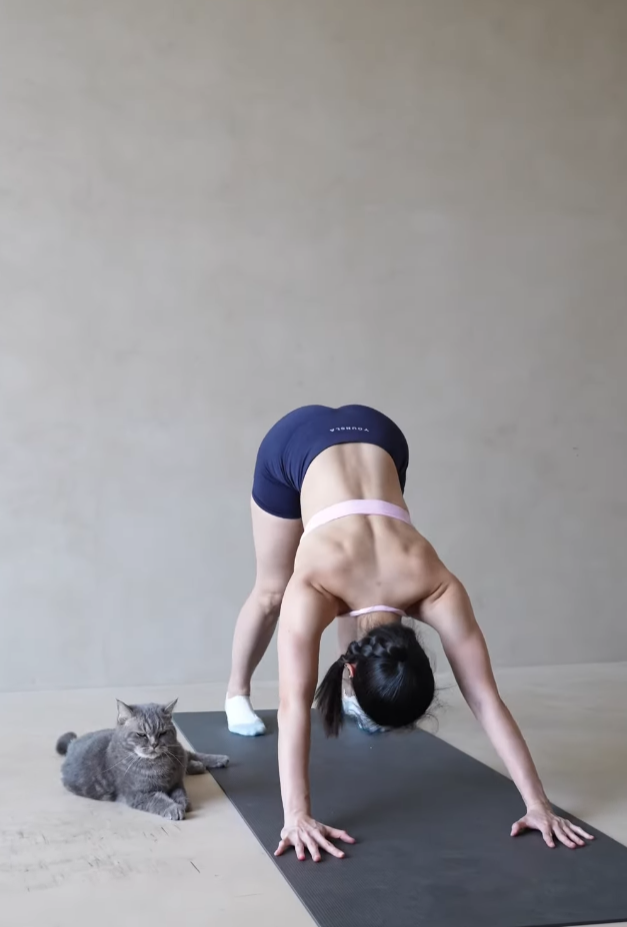

Start by stepping forward into a lunge position, with your knee directly over your ankle and your back leg extended.
Place your hands on your hips or interlace your fingers behind your head.
Inhale and as you exhale, twist your upper body towards the side of the front leg, reaching your arm towards the ceiling.
Hold the twist for a few seconds, then return to the starting position and switch sides.
Perform 5-8 repetitions per side.

4. World’s Greatest Stretch (Full Body Mobility)
The World’s Greatest Stretch is one of the most comprehensive mobility exercises that targets multiple areas, including the hips, hamstrings, quads, and spine. It’s perfect for opening up the entire body and improving flexibility and mobility.
How to Perform:
- Start in a standing position and step your right foot forward into a deep lunge.
- Place your left hand on the floor, and with your right hand, reach for the sky while twisting your torso open.
- Hold the stretch for 2-3 seconds, then return to the starting position.
- Step your left leg forward into a lunge and repeat the stretch on the other side.
- Perform 5-6 repetitions per side.
5. Downward Dog to Plank Flow (Shoulder and Hip Mobility)
This exercise helps mobilize the shoulders, hamstrings, and hips while also engaging your core. It’s a great way to enhance flexibility in the back and legs while improving overall mobility.
How to Perform:
- Start in a high plank position with your hands directly beneath your shoulders and your feet hip-width apart.
- Push your hips up and back into a Downward Dog position, keeping your head between your arms and pressing your heels towards the floor.
- Hold the Downward Dog position for 2-3 seconds, then flow back into a plank.
- Repeat this flow for 10-12 repetitions.
6. Ankle Rolls (Ankle Mobility)
Ankle mobility is often overlooked, but it plays an important role in balance, stability, and overall movement efficiency. Ankle rolls are a simple yet effective way to increase mobility in the ankle joints.
How to Perform:
- Stand tall or sit in a comfortable position.
- Lift one foot off the ground and rotate your ankle in a clockwise direction for 8-10 repetitions.
- Reverse the direction and rotate the ankle counterclockwise for 8-10 repetitions.
- Repeat with the other foot.
When to Use This Mobility Flow
This quick mobility flow is ideal for both warm-up and recovery sessions. Here’s how you can incorporate it into your routine:
1. Pre-Workout (Warm-up)
Before starting any workout, it’s important to prime your muscles and joints for the movements you’ll be performing. This flow activates key areas of the body, increases blood flow, and improves flexibility, making it easier for you to move through a range of motions without discomfort.
2. Post-Workout (Recovery)
After a workout, your muscles and joints may feel tight and fatigued. This flow helps reduce muscle tension, increase blood circulation to the muscles, and accelerate the recovery process. By incorporating it after your workout, you can help alleviate soreness and stiffness and prevent post-exercise injuries.
Final Thoughts
Mobility is an essential component of both warm-ups and recovery. This quick mobility flow is designed to improve joint and muscle function, increase flexibility, and enhance performance. Incorporating these movements into your routine can help you maintain a healthy range of motion, prevent injuries, and promote faster recovery.
Whether you’re gearing up for an intense workout or winding down after one, this flow is the perfect way to keep your body moving fluidly and efficiently. Try it before your next workout or as a way to help your body recover after a tough session, and feel the difference it makes in your overall performance and well-being.



